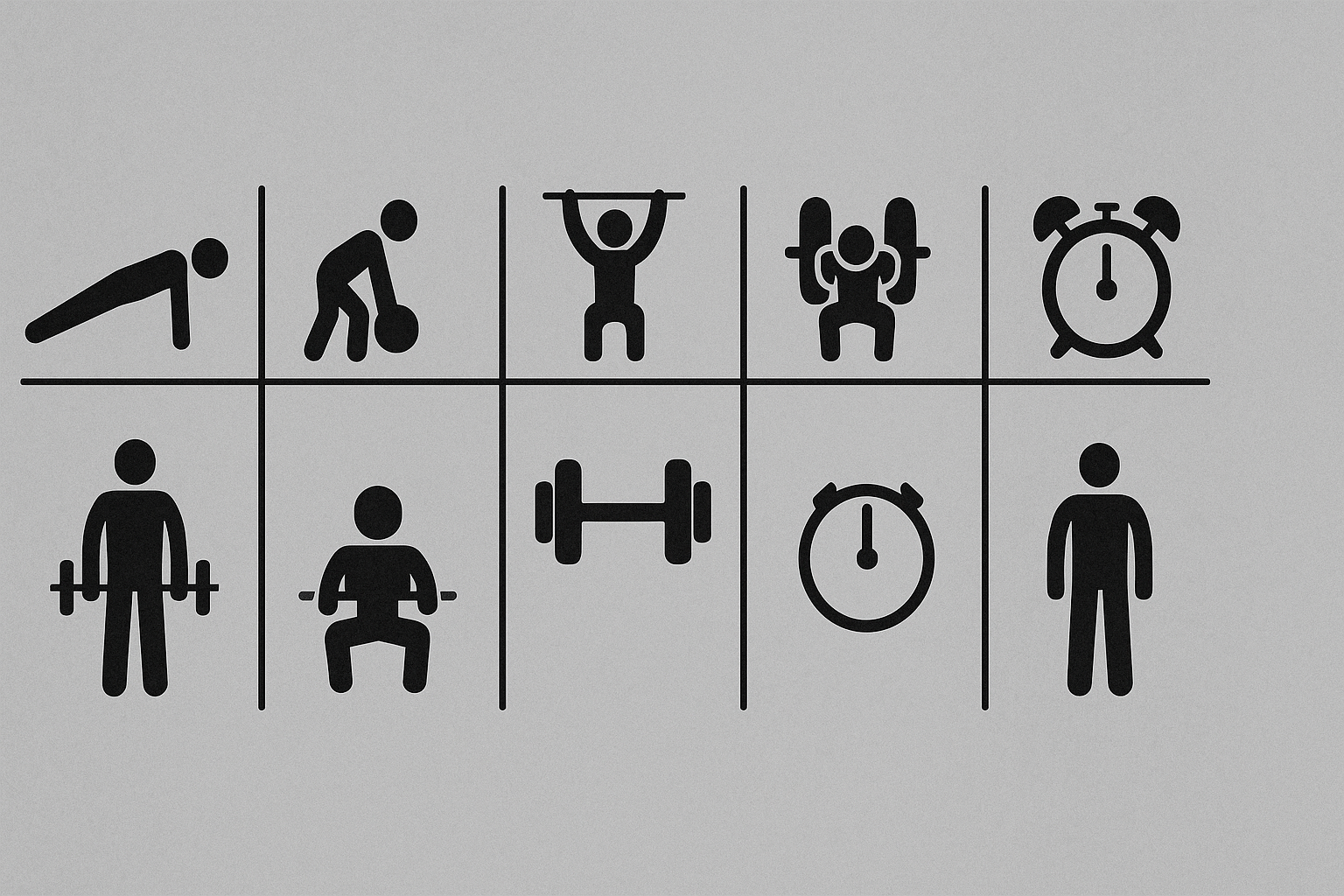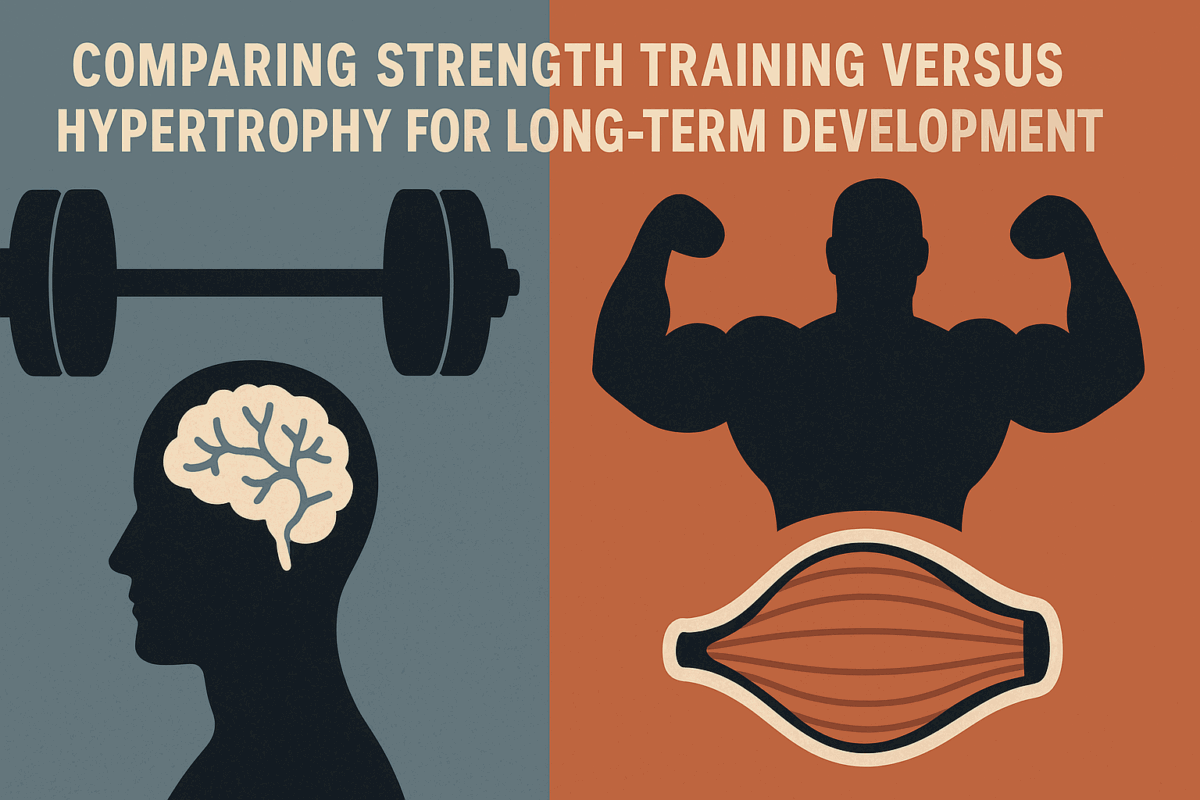Introduction: Understanding the Path to Muscle Mastery
In the ever-evolving world of fitness, one concept remains fundamental to achieving noticeable muscle growth: hypertrophy. For those looking to make significant strides in strength and muscle development, engaging in a hypertrophy workout program is not just recommended but essential. This scientifically grounded approach combines the strategic use of resistance training, progressive overload, and nutritional alignment to stimulate muscle fiber growth and maximize size. Unlike generic fitness routines, hypertrophy programming requires deliberate planning, intelligent progression, and precise execution. By examining how hypertrophy works and how it differs from other training modalities, individuals can create a personalized plan that not only builds muscle but enhances long-term strength and functionality. For college graduates and seasoned lifters alike, understanding the intricacies of hypertrophy bridges the gap between mediocrity and excellence in physical development.
You may also like: Best Exercises to Lose Weight Fast: How to Choose the Most Effective Weight Loss Training for Rapid Results

What Is Hypertrophy and Why It Matters
Hypertrophy refers to the increase in the size of muscle cells, primarily achieved through resistance training. This physiological process occurs when muscle fibers experience micro-tears during strenuous activity and subsequently repair themselves to become thicker and stronger. There are two primary types of hypertrophy: myofibrillar hypertrophy, which increases muscle density and strength, and sarcoplasmic hypertrophy, which enhances muscle volume through increased fluid storage in muscle cells. The best hypertrophy program ideally integrates stimuli for both types, depending on the individual’s goals.
What does hypertrophy do for the body beyond aesthetics? The benefits of muscle hypertrophy include improved metabolic rate, better joint support, enhanced athletic performance, and reduced risk of injury. In the long term, hypertrophy contributes to healthier aging by preserving lean muscle mass and functional strength. Understanding the nuances of this adaptation is vital for crafting a good hypertrophy program, as it allows individuals to target their efforts more precisely and sustainably.

How Does Hypertrophy Work: Science Behind the Gains
To answer the question “how does hypertrophy work,” one must delve into the molecular and mechanical triggers that drive muscle growth. At its core, hypertrophy is stimulated through mechanical tension, muscle damage, and metabolic stress. Mechanical tension involves the force generated when lifting weights, while muscle damage refers to the micro-tears caused by eccentric loading. Metabolic stress, on the other hand, results from the accumulation of metabolites like lactate during high-rep sets.
These stimuli activate signaling pathways within muscle cells, notably the mTOR (mammalian target of rapamycin) pathway, which governs protein synthesis. This biochemical reaction requires adequate amino acid availability, making nutrition a pivotal component of any hypertrophy training program. By cycling through periods of high volume, moderate-to-heavy loads, and varied rest intervals, lifters can stimulate hypertrophic adaptations effectively. This multifaceted understanding is foundational when determining how to build hypertrophy sustainably and efficiently.

Hypertrophy vs Strength Training: Understanding the Differences
One of the most common debates in the fitness community is hypertrophy vs strength training. While both involve lifting weights, their goals, training variables, and physiological outcomes differ significantly. Strength training prioritizes maximal force output, often utilizing low repetitions (1-5 reps) and heavy loads (85-100% of 1RM). It focuses on neural adaptations, such as improved motor unit recruitment and firing rate.
In contrast, hypertrophy training emphasizes moderate loads (65-85% of 1RM), higher repetitions (6-12 reps), and increased time under tension. The objective is to maximize muscle fiber fatigue and metabolic stress, promoting cellular enlargement. A hypertrophy workout plan often incorporates multiple sets per muscle group, shorter rest periods, and varied exercise selection to ensure comprehensive stimulation.
For those torn between strength vs hypertrophy, it is important to note that they are not mutually exclusive. Many periodized programs successfully blend both approaches, allowing athletes to gain size while simultaneously increasing their strength base. Understanding the distinct purposes of each allows individuals to align their training more closely with their goals.

Crafting the Best Hypertrophy Program for Your Goals
Designing the best hypertrophy program begins with clarity on individual objectives, training experience, and physiological constraints. An effective plan considers frequency, intensity, volume, and progression. For beginners, a three-day full-body split may suffice, while intermediate to advanced lifters benefit from a five- to six-day upper/lower or push/pull/legs split.
Each workout should include compound movements like squats, deadlifts, presses, and rows to target multiple muscle groups and stimulate systemic adaptation. Isolation exercises such as biceps curls and triceps extensions can be layered to fine-tune muscle engagement. Progressive overload remains the cornerstone of hypertrophy training, requiring consistent increases in weight, reps, or intensity over time. This deliberate challenge ensures continued muscle fiber recruitment and adaptation.
Including deload weeks, where volume or intensity is reduced, helps manage fatigue and prevents overtraining. Additionally, tracking key performance indicators such as rep quality, rest periods, and perceived exertion can refine training outcomes. Ultimately, the best hypertrophy routine is one that evolves with the individual and responds to biofeedback, injury history, and life stressors.

Best Hypertrophy Exercises for Maximizing Growth
Selecting the best hypertrophy exercises involves more than just targeting major muscle groups; it requires understanding biomechanics, range of motion, and muscular activation. Compound lifts like the barbell back squat and deadlift offer unparalleled stimulus for the legs, glutes, and posterior chain. Their ability to load heavily and involve multiple joints makes them foundational to any hypertrophy workout plan.
Upper-body development thrives on exercises like the bench press, overhead press, barbell row, and pull-up. These movements train primary muscle groups while engaging stabilizers and core musculature. For enhanced hypertrophic response, lifters can incorporate techniques such as tempo manipulation (e.g., slow eccentrics) and mechanical drop sets to increase time under tension.
Isolation exercises should not be overlooked. Movements such as leg extensions, cable flyes, and preacher curls allow for focused contraction and improved muscle mind connection. These are especially useful for targeting lagging body parts or addressing muscular imbalances. Rotating exercises every few weeks helps mitigate accommodation and keeps progress consistent.
Frequently Asked Questions: The Ultimate Hypertrophy Workout Program for Building Strength and Size
1.How Can You Customize a Hypertrophy Workout Program for Older Adults?
Older adults can absolutely benefit from a hypertrophy workout program when tailored to their specific needs. The key is to prioritize joint-friendly movements, emphasize proper warm-up and cool-down routines, and reduce the risk of overuse injuries. Training frequency may remain at two to three sessions per week, focusing on full-body workouts that include hypertrophy exercises with controlled tempo and lighter loads. The inclusion of machines and resistance bands can support joint health and still stimulate muscle fibers effectively. Recovery becomes increasingly critical with age, so incorporating longer rest periods and adequate sleep ensures optimal adaptation and prevents overtraining.

2.Advanced Methods to Increase Intensity in a Hypertrophy Workout Program
To push past plateaus, advanced techniques can elevate the effectiveness of your hypertrophy workout program. Methods such as rest-pause training, drop sets, and supersets increase time under tension and metabolic stress, enhancing hypertrophic stimulus without adding volume. Another technique involves blood flow restriction (BFR) training, which uses lighter weights but generates comparable growth signals. Using intra-set stretching or slow eccentrics can further challenge muscle fibers and promote myofibrillar hypertrophy. These strategies must be applied judiciously to avoid overreaching, especially when incorporated into a high-frequency hypertrophy training program.
3.What Are the Best Hypertrophy Exercises for Functional Strength?
Some of the best hypertrophy exercises double as tools for enhancing functional strength. These include front squats, Romanian deadlifts, weighted chin-ups, and single-arm dumbbell presses. Unlike isolated movements, these exercises demand core stabilization, joint control, and muscle coordination, which translates well into daily tasks and athletic performance. Training with free weights and in multiple planes of motion reinforces balance and proprioception. Incorporating these movements into your hypertrophy plan ensures not just aesthetic development but improved mobility and real-world strength.
4.How to Reach Hypertrophy Without High Volume Training
It is possible to understand how to reach hypertrophy even if your schedule or recovery capacity limits your volume. Maximizing effort within fewer sets, often referred to as high-intensity, low-volume training, focuses on taking sets close to or to failure. Emphasizing quality over quantity, lifters can slow down the eccentric phase, use pre-exhaustion techniques, or add pauses to increase the time under tension. Periodic variations in tempo and intensity can still drive significant growth. This approach is particularly helpful for lifters who also participate in endurance sports or have time constraints.
5.Addressing Strength Training vs Muscle Building Goals in One Routine
Balancing strength training versus hypertrophy goals in one program is not only feasible but synergistic. Early in the week, sessions can emphasize neural strength development with lower reps and heavier loads. Later sessions can transition into traditional hypertrophy training with moderate loads and higher reps. This undulating periodization allows for progression in both realms without sacrificing one for the other. Over time, this approach can support both performance and aesthetic outcomes, catering to individuals who are interested in how to build hypertrophy without neglecting raw strength.
6.How Psychological Factors Impact Hypertrophy Training Outcomes
The mental component of a hypertrophy training program often goes underappreciated. Focus, consistency, and internal motivation play a crucial role in achieving progressive overload and sustaining long-term engagement. Visualization, goal setting, and even music selection can improve workout intensity and execution. Athletes who track their progress and engage in regular self-assessment tend to exhibit greater adherence and improved muscle hypertrophy over time. Incorporating mindfulness or breathwork during rest periods may enhance recovery and readiness, offering both physiological and psychological benefits.
7.Emerging Trends in Designing the Best Hypertrophy Program
Modern hypertrophy program design increasingly integrates data from wearable tech, AI-generated workout plans, and velocity-based training tools. These technologies provide real-time feedback on movement speed, load adaptation, and fatigue management. Apps can dynamically adjust training variables based on heart rate variability and recovery markers. Periodized plans now often combine in-person coaching with remote tracking, ensuring accountability while reducing guesswork. As the industry evolves, creating the best hypertrophy routine may include tech-assisted solutions that blend personal coaching with algorithmic precision.
8.How Does Hypertrophy Work Differently Across Training Ages?
Training age, or the number of years a person has been training consistently, dramatically influences how hypertrophy works. Beginners often see rapid gains due to neuromuscular adaptation and increased motor unit recruitment. Intermediate and advanced trainees require more specific stimuli, such as advanced periodization and intensity modulation, to trigger similar gains. A seasoned athlete might benefit more from variations in tempo and volume, while a novice may respond well to simpler, consistent loading strategies. Understanding this can help determine how to increase hypertrophy without overcomplicating the routine for those still building foundational strength.
9.What to Prioritize in a Good Hypertrophy Program for Injury Prevention
A good hypertrophy program prioritizes joint health, movement quality, and muscular balance to minimize the risk of injury. Prehabilitation exercises, such as rotator cuff strengthening and hip mobility drills, can be included in the warm-up. Rotating exercises every few weeks helps avoid pattern overload and maintains progress without stressing the same movement pathways. Strategic deload weeks and proper load management ensure tissue integrity and central nervous system recovery. These practices not only promote longevity but make the hypertrophy workout plan more sustainable and effective in the long term.

10.Comparing Strength Training Versus Hypertrophy for Long-Term Development
When comparing strength training versus hypertrophy from a long-term perspective, it becomes clear that both modalities serve different yet complementary roles. Strength training lays the foundation by enhancing neuromuscular efficiency and skeletal robustness. Meanwhile, hypertrophy training contributes to muscle mass, endurance, and metabolic resilience. For holistic development, alternating focus blocks between hypertrophy and strength can prevent mental fatigue and physical stagnation. By doing so, individuals can learn how to create muscle hypertrophy without sacrificing their capacity for maximal force production.
Conclusion: Building Strength and Size Through a Targeted Hypertrophy Workout Program
Creating an effective hypertrophy workout program involves more than just lifting weights; it is the synthesis of science, strategy, and self-awareness. The path to building strength and size is rooted in a deep understanding of how to achieve hypertrophy, coupled with consistent application of evidence-based training principles. From selecting the best hypertrophy exercises to adjusting nutrition and recovery, each decision shapes the trajectory of muscle growth.
Moreover, acknowledging the dynamic interplay between hypertrophy and strength training empowers individuals to tailor their routines with precision. The most successful hypertrophy workout plan is one that adapts over time, responds to feedback, and reflects the individual’s unique goals and lifestyle. For anyone serious about enhancing their physique and strength, investing in a structured, thoughtful approach to hypertrophy training is not just a recommendation—it’s a necessity. With persistence, proper planning, and a commitment to continual improvement, the rewards of hypertrophy extend far beyond aesthetics, offering lasting strength, resilience, and vitality.





